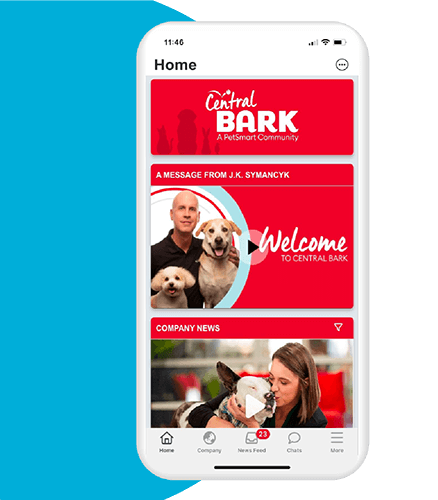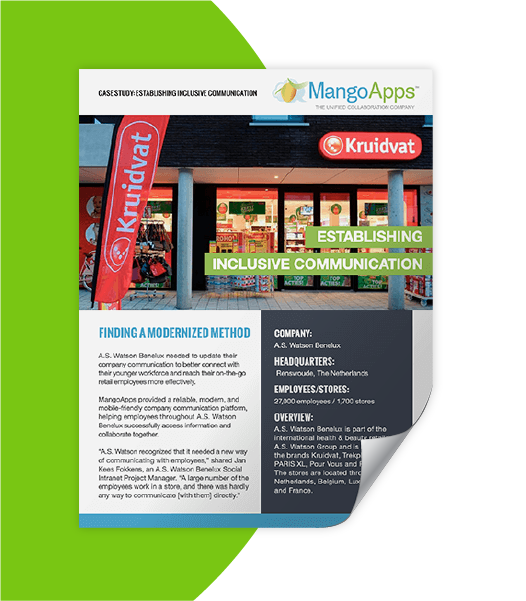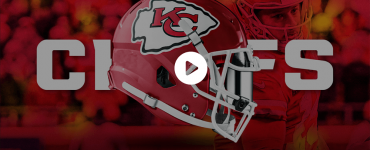Retail execution is the critical linchpin connecting your strategy to customer satisfaction. An efficient, well-monitored retail execution system ensures that your products are available and attractively displayed. It also makes sure promotions are effectively executed and store personnel are well-trained and proactive. In today’s hyper-competitive retail environment, a meticulous approach to retail execution monitoring and task management is more than just an operational necessity—it is a strategic imperative.
Given the complexity of managing multiple retail locations, product lines, and personnel, retail execution can often seem daunting. But with the right knowledge, tools, and strategies, it becomes a manageable—and even rewarding—task. At MangoApps, we have extensive experience helping retail chains roll out employee apps. We leverage this expertise to bring you actionable insights and innovative solutions to help you optimize your retail operations.
In this blog post, we aim to demystify retail execution. You should leave this article with a comprehensive understanding of best practices and technology to enhance your efficiency and outcomes. So whether you’re a seasoned retail executive or a store administrator eager to improve your operations, we invite you to join us on this journey towards retail excellence.
The Heart of Retail Execution
At the heart of retail execution lies the principle of ensuring that the right product, is in the right place, at the right time, in the right quantities, and at the right price. This mantra encapsulates the essence of retail execution. However, achieving these “rights” is not a cakewalk—it involves an intricate dance of planning, coordination, and monitoring.
Inventory is the lifeblood of any retail operation and managing it efficiently is paramount. This involves robust inventory management systems that take into account fluctuating demand, seasonality, and other market dynamics. Furthermore, it necessitates real-time visibility into stock levels, sales data, and supplier lead times to ensure optimal stocking.
But retail execution goes beyond just inventory management. It extends to how products are displayed in-store, how promotions are executed, and how store employees interact with customers. Store layout and product displays play a crucial role in influencing buying behavior. Hence, visual merchandising and store design are key components of retail execution.
Promotions are another vital aspect. It’s not enough to have great promotions; they need to be executed effectively to maximize impact. This involves timely rollout, clear communication, and attractive in-store displays. Retail staff training also comes into play here, as knowledgeable, proactive staff can significantly enhance the customer experience.
Lastly, the importance of monitoring can’t be overemphasized. Retail execution monitoring involves tracking and analyzing all these elements to ensure they’re delivering the desired results. With the advent of advanced technologies like AI and data analytics, retail execution monitoring has become more sophisticated and impactful. These tools enable retailers to gain deep insights, spot trends, identify issues early, and make data-driven decisions. Ultimately, these tools help you elevate your retail execution to new heights.

PetSmart Case Study
Learn how PetSmart has achieved 4x the industry standard for employee engagement with a mobile-first platform built on MangoApps.
The Role of Retail Execution Monitoring
Retail execution monitoring plays a pivotal role in the successful operation of retail chains. Traditionally, this process necessitated regional leaders to visit every individual store location in person. This approach, while valuable for gathering firsthand insights, was labor-intensive, time-consuming, and costly. The leaders had to physically assess everything from product availability and shelf placement, to promotional compliance and staff competency. Moreover, they had to collate and analyze this information manually, which added another layer of complexity and potential for error.
The advent of digital technology has revolutionized the retail execution monitoring process, making it faster, cheaper, and more accurate. Today, retailers can leverage innovative solutions to remotely monitor their retail execution in real-time, eliminating the need for exhaustive store visits. These technologies provide a comprehensive, birds-eye view of all store operations across multiple locations. They enable regional leaders to monitor inventory levels, track sales data, assess promotional compliance, and even evaluate staff performance, all from the comfort of their desks.
The Advent of AI
These systems are equipped with advanced features like real-time data analytics, predictive modeling, and artificial intelligence. They can automatically flag discrepancies, predict future trends, and provide actionable recommendations to optimize retail execution. This allows retailers to respond promptly to any issues, make data-driven decisions, and proactively shape their retail strategy.
Furthermore, these digital solutions can significantly enhance the efficiency of retail operations by automating routine tasks. For instance, they can automate the process of monitoring product availability or compliance with promotional plans. This not only saves valuable time and resources but also minimizes the risk of human error.
By enabling more efficient, accurate, and cost-effective retail execution monitoring, digital technology is empowering retailers to enhance their operational efficiency, improve customer satisfaction, and gain a competitive edge in the market. Thus, the adoption of these technologies is no longer a luxury—it’s an essential strategy for modern retail success.
Bridging the Gap with Technology
Embracing technology as a solution to the challenges of retail execution monitoring is a step in the right direction. At MangoApps, we’ve developed comprehensive solutions that enable seamless top-down task management and workforce orchestration, thereby supercharging retail execution monitoring.
Our task management software streamlines the process of creating, assigning, and tracking tasks across all levels of your retail organization, thereby ensuring that everyone is on the same page. This top-down approach ensures that tasks are clearly defined and delegated, deadlines are set, and progress is easily tracked in real-time. Your team can prioritize tasks, making sure the most urgent and important ones are handled promptly. It’s a powerful tool for managing retail execution, keeping the sequence of operations well-orchestrated and ensuring that nothing falls between the cracks.
Moreover, workforce orchestration is another area where our solutions excel. MangoApps offers features for real-time communication and collaboration in retail, allowing teams to work together and communicate more effectively, regardless of their location. This is particularly useful in a retail setting, where coordinating activities across multiple stores can be challenging. Our platform enables you to disseminate information quickly, seek immediate feedback, and provide on-the-spot training, enhancing the overall efficiency and performance of your workforce.
Taking it a step further, MangoApps also offers robust reporting capabilities. This gives your leaders an at-a-glance view of task progress and team performance. This level of visibility into retail operations is crucial for monitoring retail execution and making data-driven decisions.
By leveraging our digital solutions, retail chains can not only optimize their retail execution but also gain a competitive edge in the market. The combination of top-down task management and efficient workforce orchestration provided by MangoApps ensures operational efficiency gains.

A.S. Watson Benelux Case Study
Learn how A.S. Watson Benelux uses MangoApps to foster two-way communication among its 16,000 retail employees.
Future Trends in Retail Execution and Monitoring
In the future, retail execution and monitoring will continue its rapid evolution. The main drivers of this change are technological advancements and changing consumer behaviors.
At MangoApps, we’re not just keeping pace with these advances in retail execution and monitoring—we’re leading the charge. The integration of top-notch retail execution features into our offerings is a testament to our commitment to innovation and excellence. Our platform is designed to incorporate all vital elements for efficient retail operations such as real-time communication, advanced task management, and robust reporting capabilities.
We’re making rapid strides in areas like predictive analytics, AI-driven insights, and real-time reporting. As the retail landscape evolves, we’re ensuring our solutions do too, consistently updating our software with new functionalities that address emerging needs in the market.
We also foresee the increasing importance of personalization and customer-centric approaches in retail execution. To cater to this, we are constantly enhancing our platform to deliver even more personalized and engaging employee experiences, thereby driving customer experience and sales.
Below are some trends that retailers should keep an eye on.
AI and Machine Learning
Artificial Intelligence (AI) and Machine Learning (ML) are already revolutionizing retail execution monitoring and task management. These technologies can sift through vast amounts of data, identify patterns, and provide actionable insights, all in real-time. For example, AI can analyze customer shopping behaviors and predict patterns, enabling retailers to anticipate demand and optimize inventory levels accordingly. Machine Learning, on the other hand, can adapt and learn from data trends to provide increasingly accurate predictions over time.
Internet of Things (IoT)
The Internet of Things (IoT) will also play a crucial role in the future of retail execution. IoT devices can collect and share real-time data, providing retailers with a comprehensive view of their operations. These devices can monitor a variety of factors, including inventory levels, customer traffic, and store conditions, thereby enabling retailers to optimize their retail execution based on real-time data.
Advanced Analytics
Advanced analytics will continue to be a powerful tool for monitoring retail execution. With the ability to analyze and visualize complex data sets, these tools can provide retailers with deep insights into their operations. This can help them identify areas of improvement, make data-driven decisions, and track the impact of these decisions over time.
Personalization
As consumers increasingly expect personalized experiences, retailers will need to ramp up their efforts in this area. AI and data analytics can analyze customer data to gain insights into individual shopping behaviors and preferences. Retailers can leverage this information to tailor their offerings and marketing messages to individual customers, enhancing customer satisfaction and loyalty. This level of personalization is equally important at the employee level, and we are seeing parallel improvements on that side.
Conclusion
In conclusion, the future of retail execution monitoring is both exciting and challenging. As technology continues to evolve, retailers will need to keep pace, leveraging these tools to enhance their retail execution and stay ahead of the competition. The adoption of these technologies will not only improve operational efficiency but also create a more personalized, engaging shopping experience for customers and improve retail employee well-being. Thus, embracing technology and adapting to these trends is crucial for retailers looking to thrive in the dynamic retail landscape.
The retail industry is continuously evolving, with emerging trends like AI-driven analytics and personalized customer experiences shaping the future of retail execution and monitoring. Retailers who adopt these innovative solutions are well-positioned to stay ahead in the competitive market, ensuring they meet not only today’s needs but also tomorrow’s challenges.
For more, read our checklist of common retail communication problems, our guide to store employee engagement strategies, or customer stories from PetSmart, Superdrug, and A.S. Watson.







